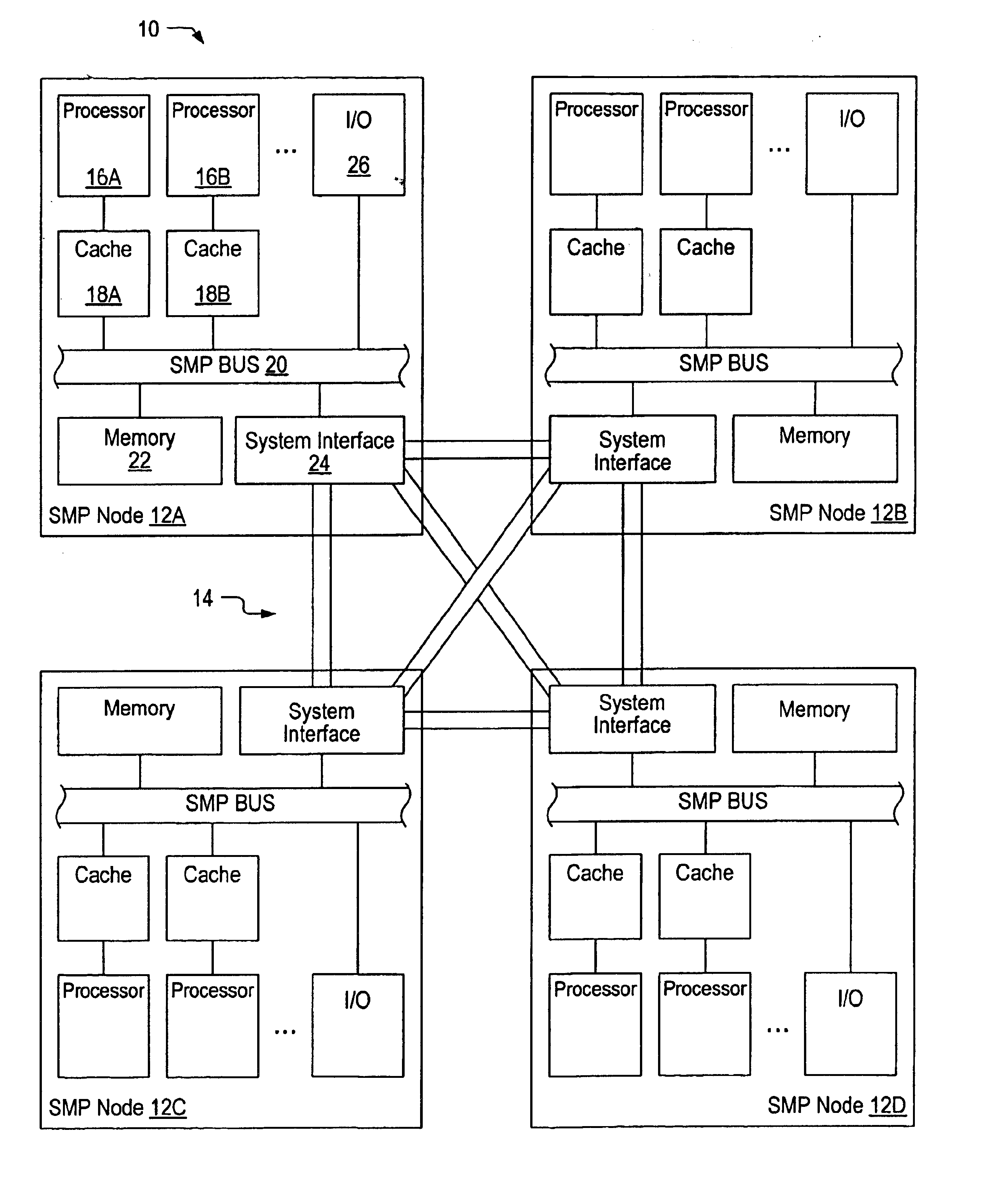Dynamic memory placement policies for NUMA architecture
a technology of dynamic memory and placement policies, applied in the direction of memory adressing/allocation/relocation, instruments, digital computers, etc., can solve the problems of limited usefulness of multiprocessing computer systems, shared bus architectures, invalidated copies of previous data,
- Summary
- Abstract
- Description
- Claims
- Application Information
AI Technical Summary
Benefits of technology
Problems solved by technology
Method used
Image
Examples
Embodiment Construction
NUMA System Overview
Turning now to FIG. 1A, a block diagram of one embodiment of a multiprocessing computer system 10 is shown. Computer system 10 includes multiple SMP nodes 12A-12D interconnected by a point-to-point network 14. Elements referred to herein with a particular reference number followed by a letter will be collectively referred to by the reference number alone. For example, SMP nodes 12A-12D will be collectively referred to as SMP nodes 12. In the embodiment shown, each SMP node 12 includes multiple processors, external caches, an SMP bus, a memory, and a system interface. For example, SMP node 12A is configured with multiple processors including processors 16A-16B. The processors 16 are connected to external caches 18, which are further coupled to an SMP bus 20. Additionally, a memory 22 and a system interface 24 are coupled to SMP bus 20. Still further, one or more input / output (I / O) interfaces 26 may be coupled to SMP bus 20. I / O interfaces 26 are used to interface ...
PUM
 Login to View More
Login to View More Abstract
Description
Claims
Application Information
 Login to View More
Login to View More - R&D
- Intellectual Property
- Life Sciences
- Materials
- Tech Scout
- Unparalleled Data Quality
- Higher Quality Content
- 60% Fewer Hallucinations
Browse by: Latest US Patents, China's latest patents, Technical Efficacy Thesaurus, Application Domain, Technology Topic, Popular Technical Reports.
© 2025 PatSnap. All rights reserved.Legal|Privacy policy|Modern Slavery Act Transparency Statement|Sitemap|About US| Contact US: help@patsnap.com



